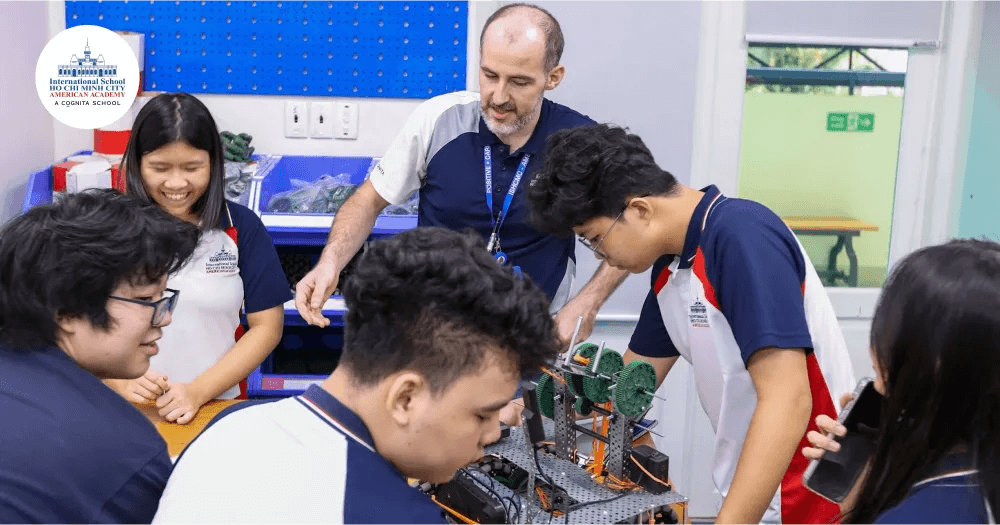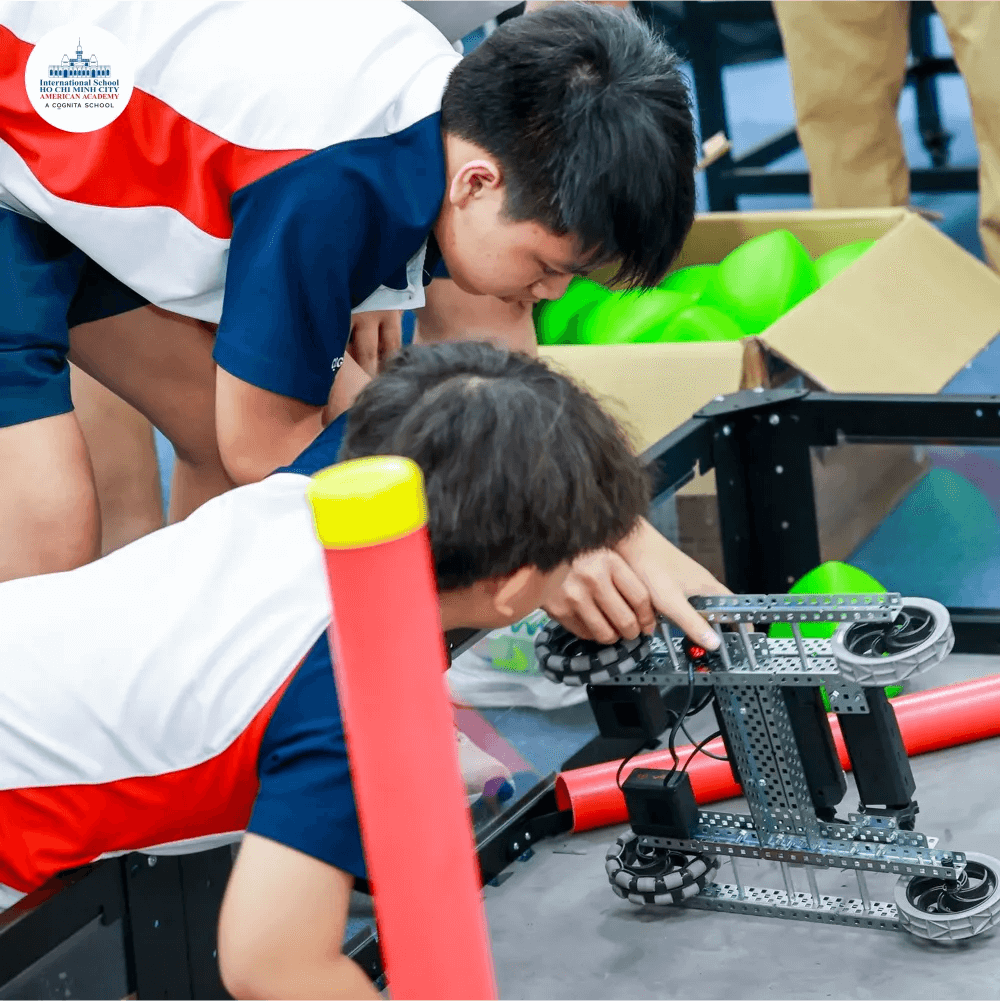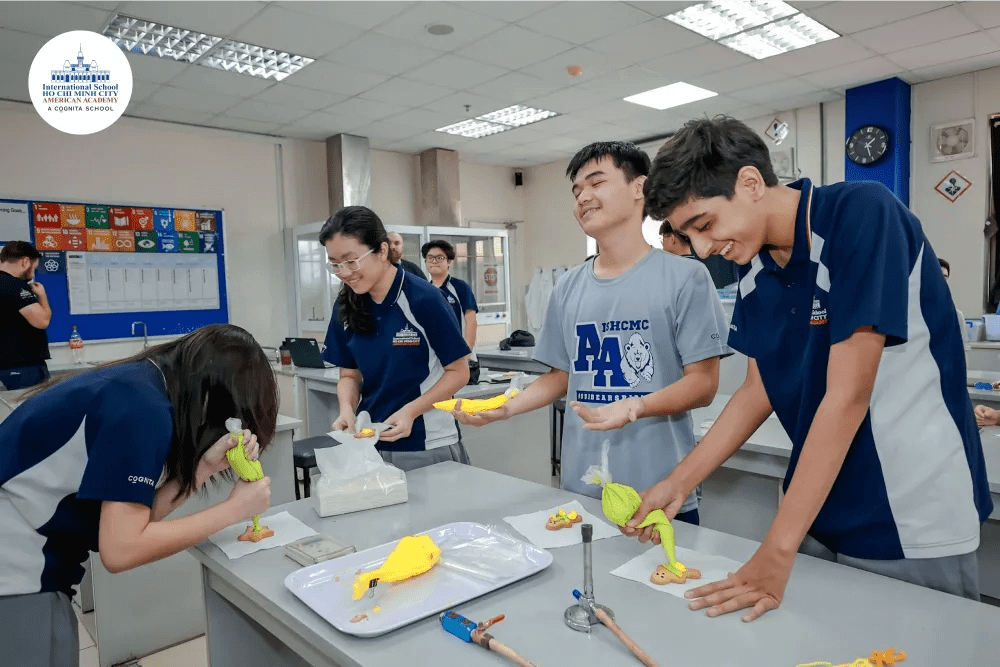How to motivate high school students is critical for promoting academic success and personal development. Motivation drives students to engage with their studies, persist through challenges, and achieve their potential. This article will explore 15 practical strategies to inspire and energize high school students, ensuring they remain committed to their educational journey.
Before delving into specific ways and activities about how to motivate high school students, let’s review why motivation is important. This will set the stage for a comprehensive discussion on enhancing student engagement and achievement.
Why Motivation Is Important
Understanding the significance of motivation for high school students requires examining key psychological variables and theories. Here are five main points:
- Autonomy and Self-Determination: Students need to feel they have control over their learning choices. This sense of control helps them feel empowered and motivated to engage more deeply with their education.
- Intrinsic and Extrinsic Motivation: Students are driven by both internal satisfaction and external rewards. Intrinsic motivation is fueled by curiosity and personal interest, while extrinsic motivation is driven by grades and social approval.
- Expectancy-Value Theory: Students are more motivated when they see the value in their activities and believe they can succeed. Teachers can enhance motivation by demonstrating the relevance of course content and fostering students’ confidence in their abilities.
- Mastery vs. Performance Goals: Motivation can be oriented towards mastering a subject or outperforming peers. Mastery orientation encourages deeper learning and intellectual risk-taking, whereas performance orientation focuses on competitive success.
- Social Goals and Motivation: Students also have social objectives alongside academic goals. Stimulating peer interaction and group work can fulfill students’ social needs and enhance their motivation and learning experience.

Recognizing why motivation matters is just the first step; the next is applying this knowledge to engage high school students. Let’s delve into 15 proven strategies to inspire and motivate them
1. Establish Clear Expectations
The first step in strategies about how to motivate high school students is setting clear expectations, which will help them excel academically and personally. High expectations significantly enhance their chances of success.

To establish appropriate expectations:
- Communicate Openly: Engage in honest discussions about students’ interests and abilities. Share your observations and find common ground to set realistic goals, focusing on strengths and areas needing improvement.
- Emphasize Effort: Prioritize effort and the learning process over outcomes. Recognize and reward hard work and progress.
- Regularly Re-evaluate: Periodically review and adjust expectations to align with students’ evolving interests and abilities, ensuring they remain challenging and attainable.
2. Assist Your Child in Setting Goals
Guiding high school students in setting meaningful goals is pivotal for their motivation and academic achievement.

Here is how to motivate high school students by assisting them in this process:
- Write Goals Down: Encourage your child to write down their goals, as research suggests that written goals are more likely to be achieved. Displaying goals prominently serves as a visual reminder and promotes regular review and reinforcement.
- Ensure Specificity: Define clear and specific objectives to provide a roadmap for achievement. Rather than vague goals, such as “improve in math,” articulate specific targets, like raising a math grade from a C to a B, accompanied by actionable steps for attainment.
- Emphasize Measurability: Set measurable goals to enable progress tracking. Tangible indicators, such as improvements in homework completion and quiz scores, facilitate monitoring and adjusting strategies.
3. Demonstrate the Importance of Education
Illustrating the significance of education can profoundly impact motivation for high school students and their academic engagement. Here are several ways to convey the importance of education effectively:
- Maintain Communication with Teachers: Establish a collaborative relationship with your child’s teacher by sharing expectations and goals. Seek their input on achieving these goals and agree on a communication method to exchange information regularly.
- Support School Programs: Attend school events like back-to-school orientation and conferences to demonstrate your interest in education. Volunteering and participating in fundraisers further reinforce the importance of school involvement.

- Create a conducive Homework Environment: Ensure your child has a quiet and well-equipped study area. Offer support during homework time but avoid completing tasks for them. Stay informed about assignments and communicate with the teacher if difficulties arise.
- Stay Engaged with Assignments: Track your child’s assignments, tests, and projects while enabling them to take responsibility for their schoolwork.
- Maintain a Positive Attitude: Your attitude towards education influences your child’s perception. Express enthusiasm about school topics and praise teachers’ efforts to support learning.
4. Support Your Child’s Preferred Learning Style
Understanding and accommodating your child’s preferred learning style can significantly enhance their motivation and academic success.

Here’s how to motivate high school students by supporting different learning styles effectively:
- Auditory Learners: If your child learns best through hearing, facilitate activities such as listening to talks or audiobooks. They may prefer spelling words aloud rather than taking written quizzes and excel at following oral instructions.
- Visual Learners: Provide materials like books and graphs for children who thrive on visual learning. They appreciate artwork and benefit from visual aids to complement oral lessons. Engage them with visual tools like charts or diagrams for better understanding.
- Kinesthetic Learners: Support kinesthetic learners by incorporating hands-on activities like building models or creating charts. Encourage movement and participation, as they prefer active learning over passive observation.
Catering to your child’s preferred learning style inspires engagement and enthusiasm, ultimately motivating them to excel in their studies.
5. Use Encouraging Language
Encouraging language can boost motivation and resilience in high school students. While praise focuses on outcomes, encouragement emphasizes effort and progress. Here’s how they differ:
- Praise:
- Focuses on discussing results and outcomes, such as achieving high grades.
- Utilizes opinion words like “good” and “great,” often linked to performance.
- Encouragement:
- Acknowledges effort and progress, regardless of the outcome.
- Employs descriptive language to highlight specific actions and achievements.

6. Promote Learning Both at Home and in the Community
Cultivating a holistic approach to learning can ignite students’ curiosity and cultivate a lifelong love for education. Here are some ways to motivate high school students and promote learning beyond the confines of the classroom:
- Utilize Multimedia Resources: Incorporate multimedia elements to enhance reading experiences. Watch video adaptations of classic literature together as a family, facilitating discussions about the differences between the book and the film.
- Immerse in Cultures: Explore diverse cultures through culinary experiences. Enjoy meals at restaurants serving authentic cuisine or experiment with cooking recipes at home. This hands-on approach enriches understanding and appreciation of different cultures.

- Broaden Perspectives: Expose your child to unfamiliar experiences to broaden their perspective. For instance, if they enjoy sports, introduce them to art forms like ballet to showcase athleticism in unexpected contexts.
- Encourage News Literacy: Encourage reading the newspaper to stay informed about current events. Discuss relevant articles and highlight print media’s depth of information and perspectives.
- Visit Museums and Exhibits: Enrich learning by visiting museums and exhibits related to school subjects such as science and social studies. Experiencing lifelike displays enhances understanding and provides a tangible connection to classroom learning.
7. Encourage Resilience in Your Child
Encouraging resilience in high school students equips them with essential skills to navigate life’s challenges and maintain motivation. Here are how to motivate high school students and encourage resilience:
- Empathize and Guide: Understand your child’s perspective and emotions, offering support and guidance to navigate difficulties. Boost problem-solving and constructive emotional expression to build resilience in facing adversities.
- Provide Choices and Adapt: Offer your child reasonable choices and adapt your approach when necessary. Empowering them with decision-making opportunities promotes autonomy and resilience, while flexibility in parenting promotes effective communication and problem-solving skills.
Parents can nurture resilience through empathy, choice, and adaptability to empower high school students to navigate obstacles confidently and maintain their motivation despite setbacks.
8. Considerations for Giving Them Rewards
Parents and teachers commonly use rewards as a motivational tool in high school settings. While opinions on the effectiveness of rewards vary, finding a middle ground may be the most pragmatic approach.
Occasional rewards, such as classroom awards or privileges, can provide tangible recognition for achievements.

However, it’s essential to balance this with intrinsic rewards, such as verbal praise or acknowledgment of personal growth, to cultivate a sense of internal satisfaction and long-term motivation for high school students. Striking this balance ensures that students feel valued while fostering their intrinsic drive for learning and personal development.
While parents play a crucial role in motivating high school students through various methods, educators also significantly impact student motivation. Shifting our focus from parental techniques to how teachers can enhance engagement and learning in the classroom, let’s explore diverse teaching methods that can inspire students.
9. Use Diverse Teaching Methods
Diversifying teaching methods beyond traditional lectures can enhance student engagement and motivation in high school classrooms. By incorporating active learning strategies such as problem-based learning, collaborative activities, and experiments, educators create opportunities for students to engage actively. Integrating technology like clickers allows for immediate feedback, enhancing the learning experience.

Integrating guest speakers, panel discussions, and student presentations into lectures enriches the learning experience and reduces monotony. This approach fosters a dynamic learning environment where students are encouraged to participate and actively apply newly acquired skills and knowledge.
10. Offer Classroom Choices
Empowering high school students with autonomy in their learning process facilitates motivation and cultivates self-directed learning skills. Educators enhance students’ sense of control over their learning outcomes by allowing them to choose research topics or providing opportunities for input in designing evaluative rubrics.

When students perceive that they have a say in their educational journey, their motivation is heightened, leading to increased engagement and ownership of their learning experiences. Classroom choices promote student autonomy and enable a more personalized and meaningful learning environment tailored to individual interests and preferences.
11. Create Challenging Assignments
Educators can design coursework that caters to students’ interests, background knowledge, and abilities to foster motivation in high school classrooms.
By providing opportunities for early success and gradually increasing the difficulty level of assignments and exams throughout the semester, educators can balance ensuring every student feels capable of success with reasonable effort and challenging them to expand their limits.

Tailoring assignments to match students’ capabilities while presenting them with intellectually stimulating challenges cultivates a supportive yet rigorous learning environment conducive to sustained motivation and academic growth.
12. Make Lessons Relevant
Engaging high school students in coursework becomes more effective when lessons are relevant to their daily lives and future aspirations. Research indicates that students exhibit heightened enthusiasm and interest when relating course content and activities to real-world experiences or educational goals.

By incorporating examples and in-class activities highlighting the material’s practical applications, educators deepen students’ understanding and enable them to recognize the significance of their learning endeavors. Establishing lesson relevance enhances student engagement and fosters a sense of purpose and motivation for high school students to succeed academically.
13. Show Enthusiasm
As the instructor, the teacher’s demeanor significantly influences the classroom atmosphere and students’ engagement with course content. Teachers can motivate students by modeling enthusiasm, as it sets the tone for student behavior and participation.
Students tend to remain attentive and motivated when they demonstrate genuine excitement for the subject matter, present information organized and compellingly, and convey a sincere interest in teaching.

Conversely, if teachers appear disinterested or uninspired, students may mirror this negative energy, resulting in decreased engagement and enthusiasm. Cultivating a dynamic and enthusiastic teaching approach stimulates a vibrant learning environment that inspires and motivates high school students.
14. Minimize Excessive Competition
Creating opportunities for peer interaction is important, but fostering an environment of excessive competition can lead to negative outcomes. While some students may claim to be motivated by competition, educators should avoid environments that promote comparison, division, or derogatory dialogue among students.

Intense competitive settings can induce performance anxiety, hinder student learning and undermine the goal of motivation.
By minimizing excessive competition and emphasizing collaboration, cooperation, and individual growth, educators can cultivate a supportive learning environment where all students feel valued and motivated to succeed.
15. Communicate and Give Constructive, Timely Feedback
Students value recognition for their efforts and often perceive grades as a primary incentive for academic performance. Providing prompt and constructive feedback on assignments allows educators to acknowledge students’ hard work while motivating them to strive for improvement.
Feedback plays a crucial role in helping students understand their progress and areas for growth. Without feedback, students may struggle to gauge their performance and grasp course concepts.

By articulating expectations and explaining the rationale behind feedback, educators empower students to make informed efforts toward success. Effective communication and timely feedback provide a supportive learning environment where students feel valued, motivated, and equipped to achieve their academic goals.
At ISHCMC – American Academy, we comprehend how to motivate high school students, and our educational approach and offerings align closely with the above-mentioned principles and strategies.
Here’s how our school’s value propositions correspond to the effective strategies for motivating high school students:
- Customized Learning Paths: Our Middle & High School programs are tailored to meet students’ varying levels of English language development, ensuring that each student receives appropriate support and challenges to excel academically.
- Preparation for Higher Education: We offer Advanced Placement courses through the College Board, which allows students to excel academically and gain a head start in their university studies.
- Personalized Support: From customized schedules for grade 11 and 12 students to Senior Seminar courses that guide them through the college application process, we provide tailored support to ensure students’ success in their academic and career endeavors.

In addition to our academic offerings, we also prioritize the well-being and comfort of our students through:
- Uniform Policy: We ensure that students’ attire reflects respect for the school community and promotes a conducive learning environment free from distractions.
- Canteen Services: Providing various healthy and nutritious food options at our school canteen, curated by renowned chefs and aimed at promoting students’ overall well-being.
- Transportation Services: Offering a safe and reliable bus system for the convenience of our students, with clear guidelines and expectations to ensure their safety and comfort during travel.
At ISHCMC – American Academy, we are dedicated to providing a comprehensive and enriching educational experience that prepares students for academic success, lifelong learning, and personal fulfillment.
Choose The Right School!
How to motivate high school students requires a holistic approach that considers their academic, social, and personal needs.
At ISHCMC—American Academy, we pride ourselves on facilitating an environment that inspires students to excel in all aspects of their education and personal development. Our dedicated teachers, rigorous curriculum, and commitment to individualized learning empower students to reach their full potential.

Join us at ISHCMC—The American Academy to discover why we are the right choice for your child’s academic journey and see how excellence meets education opportunities. Book a tour now!


